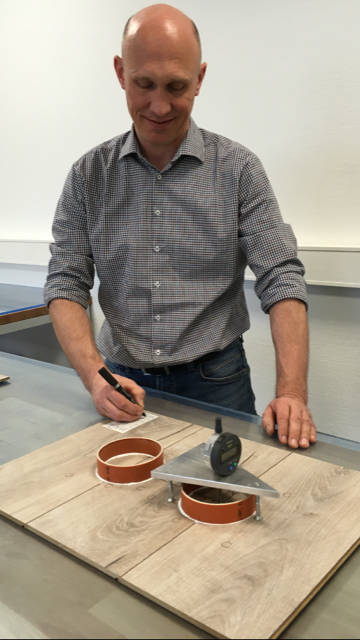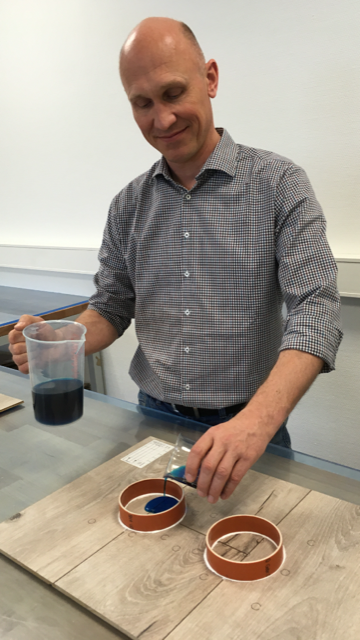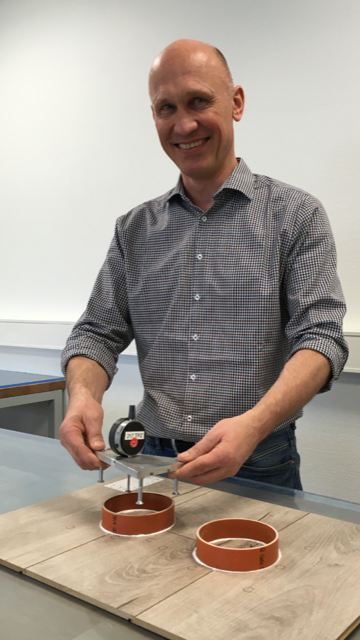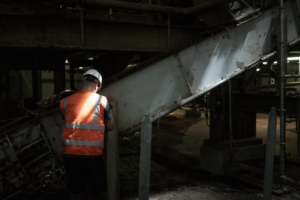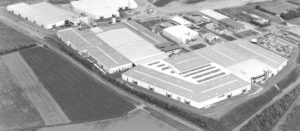The first laminate floor I laid looked like almost all laminate floors in the early 90s: three-strip decor, beech. And the planks still had to be glued together. I still remember very well the advice:
"Never wipe laminate wet. Always damp."
In fact, laminate back then liked to swell up at the edges when it got wet, whether it was due to wiping too wet or because you came home in a downpour and didn't immediately wipe the hall dry. And of course, no one seriously thought of installing laminate in the kitchen or even the bathroom.
In October 2020, I held the proof of a revolution in my hands:
The test report from the independent EPH (Entwicklungs- und Prueflabor Holztechnologie GmbH) in Dresden for our new CLASSEN laminate flooring with the megaloc-aqua-protect installation system. One sentence made me and the entire team particularly proud:
„Water penetration through the joints was not detected.“
The EPH had tested according to the NALFA method, a standardised test procedure of the North American Laminate Flooring Association. The test measures how laminate flooring behaves when its surface is exposed to standing water for 24 hours. For this purpose, the surface is measured at four different positions before and after the 24-hour exposure to water, and the visual and haptic changes - especially at panel joints and connection joints - are recorded and evaluated. Here, a closed film of water must still be present on the laminate after 24 hours. Introduced in 2018, this swelling test method, known as the NALFA test, was introduced to assess the moisture resistance of laminate floors. And our floor had passed this tough test!
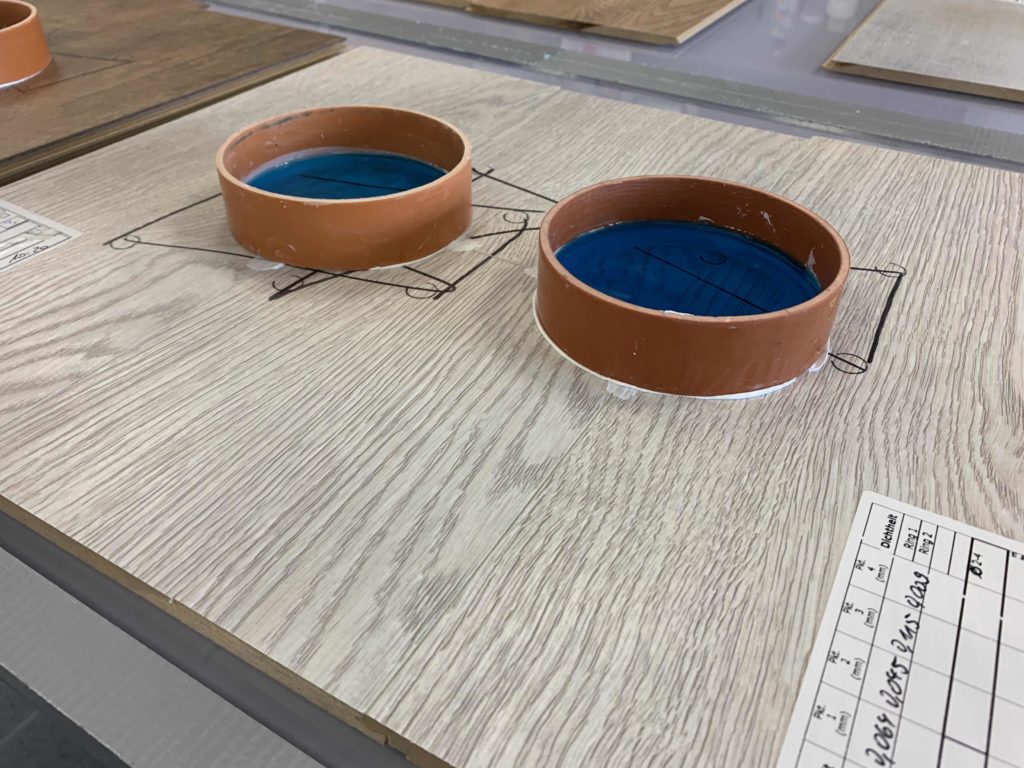
But we had not only successfully passed the NALFA test with our CLASSEN megaloc aqua protect laminate flooring, we had also done so with flying colours in comparison to competitor products. The NALFA stipulates that the laminate does not swell by more than 0.3 millimetres on average after 24 hours of water exposure on the surface. The EPH test result certified less than 0.03 millimetres.
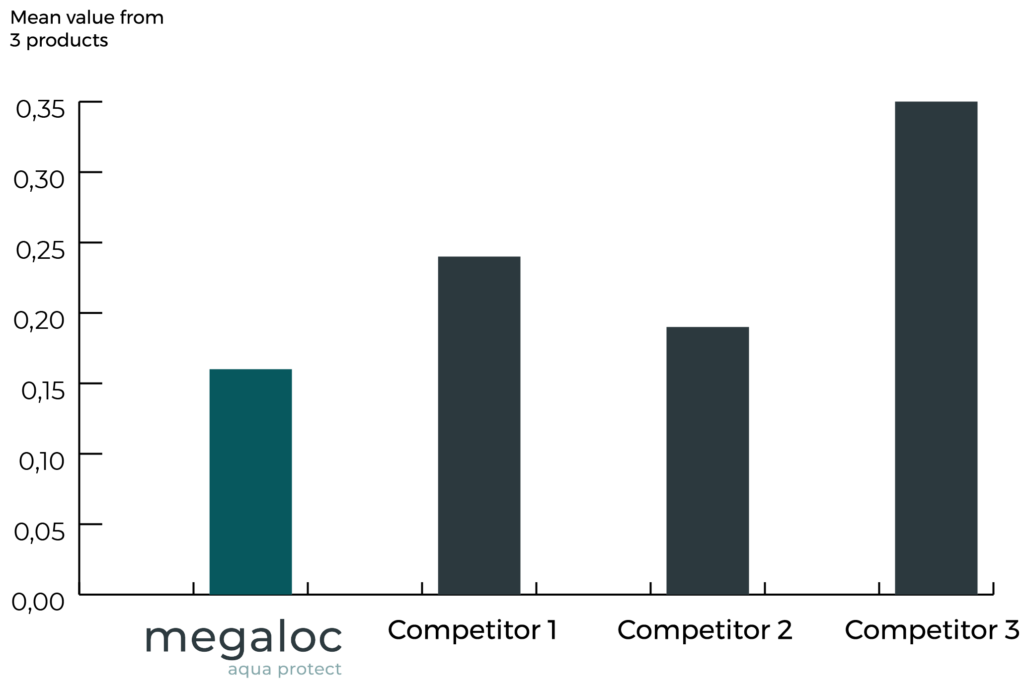
In addition, the NALFA test requires a visual assessment of the swelling behaviour of the surface that has dried back after 24 hours. Here, 5 classes are distinguished. According to EPH, the CLASSEN megaloc aqua protect laminate flooring is rated class 1, the best category. Our team, consisting of the technology and production department at CLASSEN in Baruth, had worked hard over the last few years, developing ideas, optimising over and over again - and this was the excellent result. We at CLASSEN had developed the world's first waterproof laminate flooring with a quick installation system.
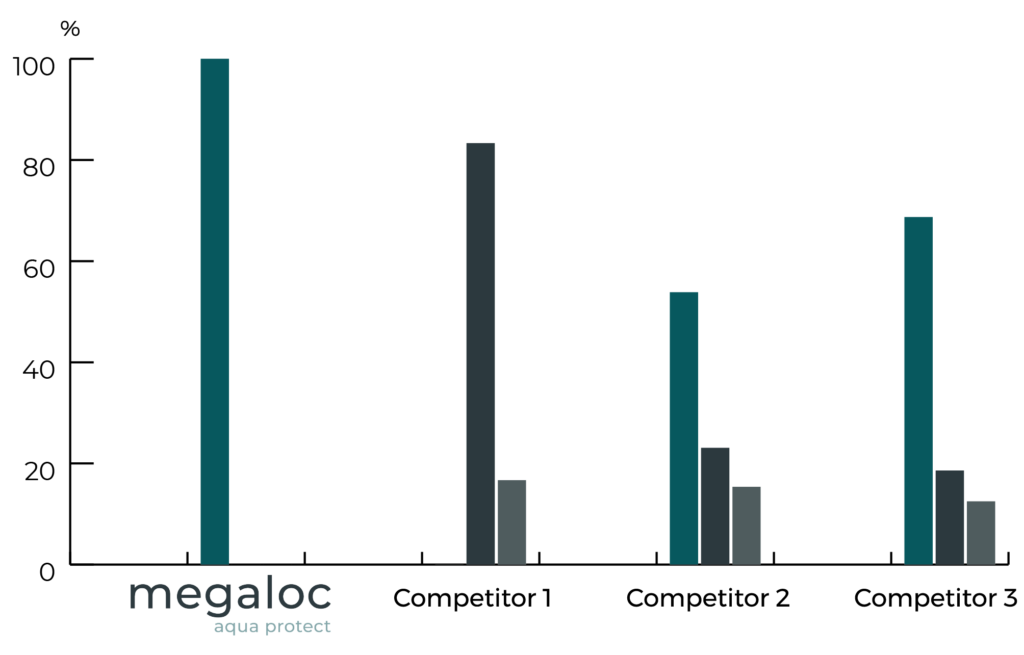
What do these results mean in practice?
Well, the dog can shake to his heart's content on our megaloc aqua protect laminate flooring in the hallway after a walk in the rain, without the need for time-consuming immediate mopping. After a wet and merry evening, a glass of wine can be spilt in the kitchen at an early hour with CLASSEN megaloc aqua protect laminate flooring (with edge seal) and no one has to remember: "Don't get it wet!". Laminate from CLASSEN is now even more robust and durable.
And all this with the usual simple patented installation process from CLASSEN megaloc.
So which technologies are responsible for the success of CLASSEN megaloc aqua protect laminate flooring?
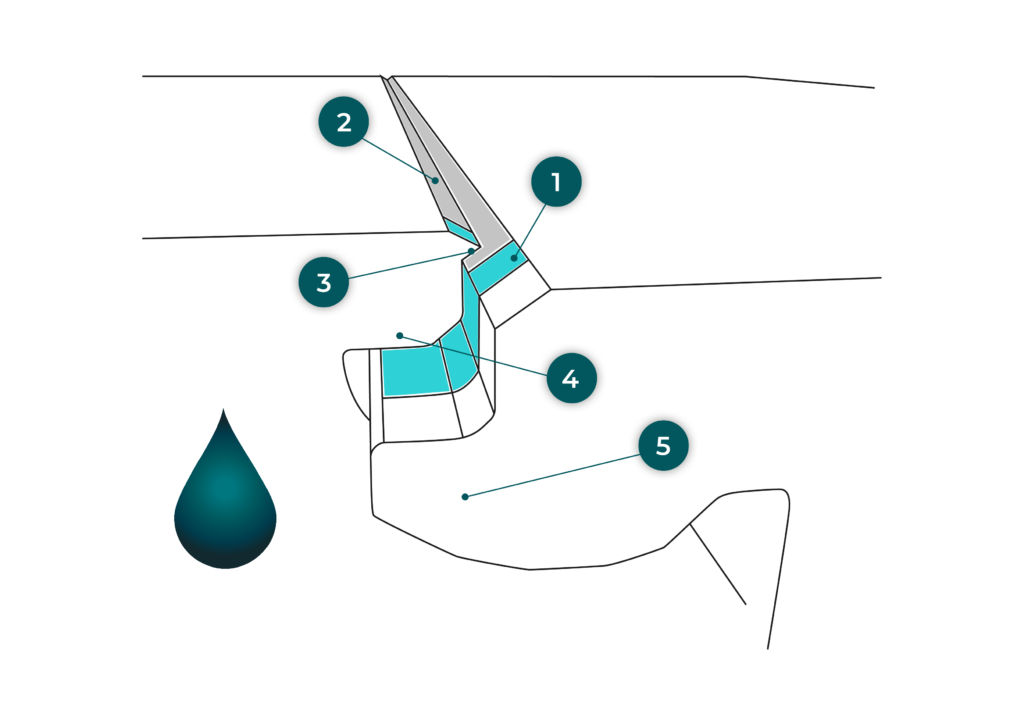
- The main target for water on laminate floors are the joints between the panels. Penetrating moisture thus often causes the core boards to swell. We have therefore treated the edges of the individual CLASSEN megaloc aqua protect laminate floorboards with an all-round edge hydrophobic coating to prevent water penetration.
- We have additionally colour-coordinated the angled bevels of the joints on the surface to match the décor.
- The bevels overlap each other so that the vertical joint opening is invisible and additional protection against water penetration and dirt is provided.
- Our permanently force-fit connection of the respective laminate planks consists of a very tight joint. Although the planks are easy to join together, there are no gaps after installation and water cannot penetrate.
- A swell-tempered HDF board is also used as the carrier material, which also greatly reduces edge swelling.
With the megaloc-aqua-protect laminate floors, we at CLASSEN have once again proven what our teams are capable of. With this product, first and foremost the colleagues from the technology department around Andreas Sieder in the profile development, the team around David Schumann in the solution development of the all-round edge hydrophobisation as well as our deputy plant manager Christian Dümichen and his technologists in the conception of the swell-tempered HDF board.
Of course, we at CLASSEN are proud of our achievement. At the same time, we are already working on the next floors of the future with special, user-friendly and sustainable properties. What will that be? Let us surprise you.
Click here to go to the megaloc-aqua-protect website: www.megaloc.de


